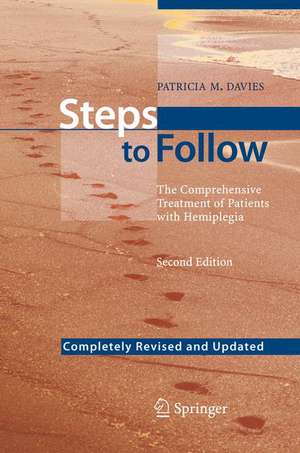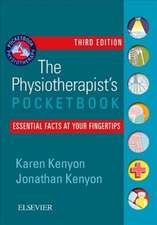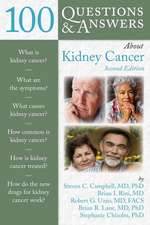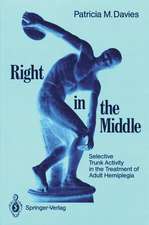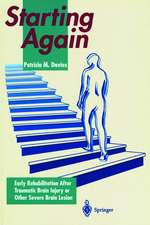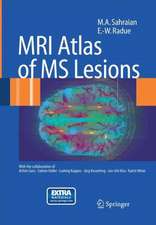Steps to Follow: The Comprehensive Treatment of Patients with Hemiplegia
Autor Patricia M. Davies Cuvânt înainte de J. Kesselring Fotografii de D.J. Brühwiller, R. Gierigen Limba Engleză Paperback – 8 mai 2000
Preț: 665.96 lei
Preț vechi: 701.01 lei
-5% Nou
Puncte Express: 999
Preț estimativ în valută:
127.43€ • 133.06$ • 105.23£
127.43€ • 133.06$ • 105.23£
Carte tipărită la comandă
Livrare economică 15-29 aprilie
Preluare comenzi: 021 569.72.76
Specificații
ISBN-13: 9783540607205
ISBN-10: 354060720X
Pagini: 548
Ilustrații: XXXII, 514 p. 427 illus.
Dimensiuni: 155 x 235 x 29 mm
Greutate: 0.75 kg
Ediția:2nd completely rev. ed. 2000
Editura: Springer Berlin, Heidelberg
Colecția Springer
Locul publicării:Berlin, Heidelberg, Germany
ISBN-10: 354060720X
Pagini: 548
Ilustrații: XXXII, 514 p. 427 illus.
Dimensiuni: 155 x 235 x 29 mm
Greutate: 0.75 kg
Ediția:2nd completely rev. ed. 2000
Editura: Springer Berlin, Heidelberg
Colecția Springer
Locul publicării:Berlin, Heidelberg, Germany
Public țintă
Professional/practitionerCuprins
1 Problems That Cannot Be Seen Directly.- Problems Related to Disturbed Perception.- Some Common Problems Associated with Disturbed Perception.- Reciprocity of Perception and Learning.- Disturbed Perception and Learning.- Implications for Therapy.- Guided Movement Therapy (Guiding).- Therapeutic or Intensive Guiding.- Guiding When Giving Assistance.- Guiding the Patient in a Standing Position.- Considerations.- 2 Normal Movement Sequences and Balance Reactions.- Analysis of Certain Everyday Movements.- Balance, Righting and Equilibrium Reactions.- Task-orientated Arm and Hand Movements.- Considerations.- 3 Abnormal Movement Patterns in Hemiplegia.- Persistence of Primitive Mass Synergies.- The Synergies as They Appear in Association with Hemiplegia.- Abnormal Muscle Tone.- Typical Patterns of Spasticity or Hypertonicity.- Placing.- Reappearance of Tonic Reflex Activity.- Associated Reactions and Associated Movements.- Abnormal Tension in the Nervous System.- Disturbed Sensation.- Considerations.- 4 Practical Assessment — a Continuing Process.- The Aims of Assessment.- Recommendations for Accurate Assessment.- Specific Aspects of Assessment.- Recording the Assessment.- The Comprehensive Evaluation.- Considerations.- 5 The Acute Phase — Positioning and Moving in Bed and in the Chair.- The Arrangement of the Patient’s Room.- Positioning the Patient in Bed.- Sitting in a Chair.- Self-assisted Arm Activity with Clasped Hands.- Moving in Bed.- Transferring from Bed to Chair and Back Again.- Incontinence.- Constipation.- Considerations.- 6 Normalising Postural Tone and Teaching the Patient to Move Selectively and Without Excessive Effort.- Important Activities for the Trunk and Lower Limbs in Lying.- Activities in Sitting.- Placing the Hemiplegic Leg and Facilitating Crossing It Over the Other Leg.- Coming From Sitting to Standing.- Activities in Standing with Weight on the Hemiplegic Leg.- Pelvic Tilting with Selective Flexion/Extension of the Lumbar Spine.- Activities inStanding with Weight on the Sound Leg.- Considerations.- 7 Retraining Balance Reactions in Sitting and Standing.- Activities in Sitting.- Activities in Standing with the Weight on Both Legs.- Activities in Standing with the Weight on the Hemiplegic Leg.- Activities During Which the Weight Is on Alternate Legs.- Activities in Standing with the Weight on the Sound Leg.- Considerations.- 8 Encouraging the Return of Activity in the Arm and Hand and Minimising Associated Reactions.- Activities in Supine Lying.- Activities in Sitting.- Activities in Standing.- Stimulation of Active and Functional Movements.- Retraining Selective Flexion of the Arm and Hand.- Considerations.- 9 Re-educating Functional Walking.- Considerations for Treatment.- When to Start Walking.- The Facilitation of Walking.- Practical Ways to Facilitate Walking.- Self-inhibition of Associated Reactions.- Protective Steps to Regain Balance.- Supporting the Hemiplegic Foot.- Going Up and Down Stairs.- Using a Walking-stickor Cane.- Considerations.- 10 Some Activities of Daily Living.- Therapeutic Considerations.- Personal Hygiene.- Dressing.- Undressing.- Eating.- Driving a Car.- Considerations.- 11 Mat Activities.- Going Down Onto the Mat.- Moving to Side-Sitting.- Activities in Long-Sitting.- Rolling.- Prone Lying.- Moving to Prone Kneeling.- Activities in Prone Kneeling.- Activities in Kneel-Standing.- Activities in Half-Kneel-Standing.- Standing up from Half-Kneeling.- Considerations.- 12 Shoulder Problems Associated with Hemiplegia.- The Subluxed or Malaligned Shoulder.- The Painful Shoulder.- The “Shoulder-Hand” Syndrome.- Considerations.- 13 The Neglected Face.- Important Considerations for Facilitation of the Movements of the Face and Mouth.- Dentures.- Appropriate Treatment for the Common Difficulties.- Oral Hygiene.- Considerations.- 14 Out of Line (the Pusher Syndrome).- The Typical Signs.- Predisposing Factors.- Specific Treatment.- Considerations.- 15 Including Nervous System Mobilisation in the Treatment.- Adaptation of the Nervous System to Movement.- Loss of Nervous System Mobility Following a Lesion.- Problems Associated with Abnormal Tension and Loss of Mobility.- The Tension Tests for Assessment and Treatment.- Conclusion.- 16 Maintaining and Improving Mobility at Home.- Maintaining Mobility Without the Help of a Therapist.- Common Sites of Increased Hypertonicity and/or Loss of Range of Motion.- Ensuring the Patient’s Participation.- Specific Exercises for Muscles and Joints.- Automobilisation of the Nervous System.- Some Additional Active Exercises.- Leisure Activities and Hobbies.- Conclusion.- 17 References.- 18 Subject Index.
Textul de pe ultima copertă
In the 15 years since publication of the first edition, Steps to Follow has gained a worldwide reputation among professionals as a unique practical guide to the treatment of neurologically impaired patients. This second, completely updated edition incorporates significant practical advances in early and later neurorehabilitation and in the understanding of the problems confronting both patients and those who work with them. The relevant therapeutic activities to improve functional ability and quality of life following a stroke are described in detail twith the help of 750 photos showing patients in action during treatment: - Practical ways in which patients can be helped to interact more normally with their environment and so regain their independence, in spite of the perceptual disorders often associated with hemiplegia - More detailed explanation of hand function and more in-depth analysis of normal walking - Revised chapters on the various therapeutic activities, including new meansof stimulating selective movements in order to counteract increases in muscle tone - Deeper understanding of abdominal muscle activity, which is relevant to retraining balance reactions and sitting and standing - A new chapter demonstrating how David Butlers concept of the mobilisation of neural structures throughout the body can be of inestimable value - Examples of ways in which therapists, nurses and relatives can help very severely disabled patients to avoid the development of secondary complications or overcome existing difficulties - Ways in whicfh the patient can maintain mobility and continue to make progress even after cessation of treatment, by exercising at home and participating in sporting and other leisure activities.
Caracteristici
Enables readers to gain a yet more comprehensive understanding of the problems confronting adults with hemiplegia and those who work with them therapeutically Gives yet more comprehensive instruction on practical ways of helping the patient to interact with their environment and to gain more independence Shows new possibilities for stimulating selective movements in order to counteract increase in muscle tone, covering all relevant therapeutic activities COMPLETELY NEW: incorporates David Butler's concept of MOBILISATION OF THE NERVOUS SYSTEM as an integral part of patient treatment
